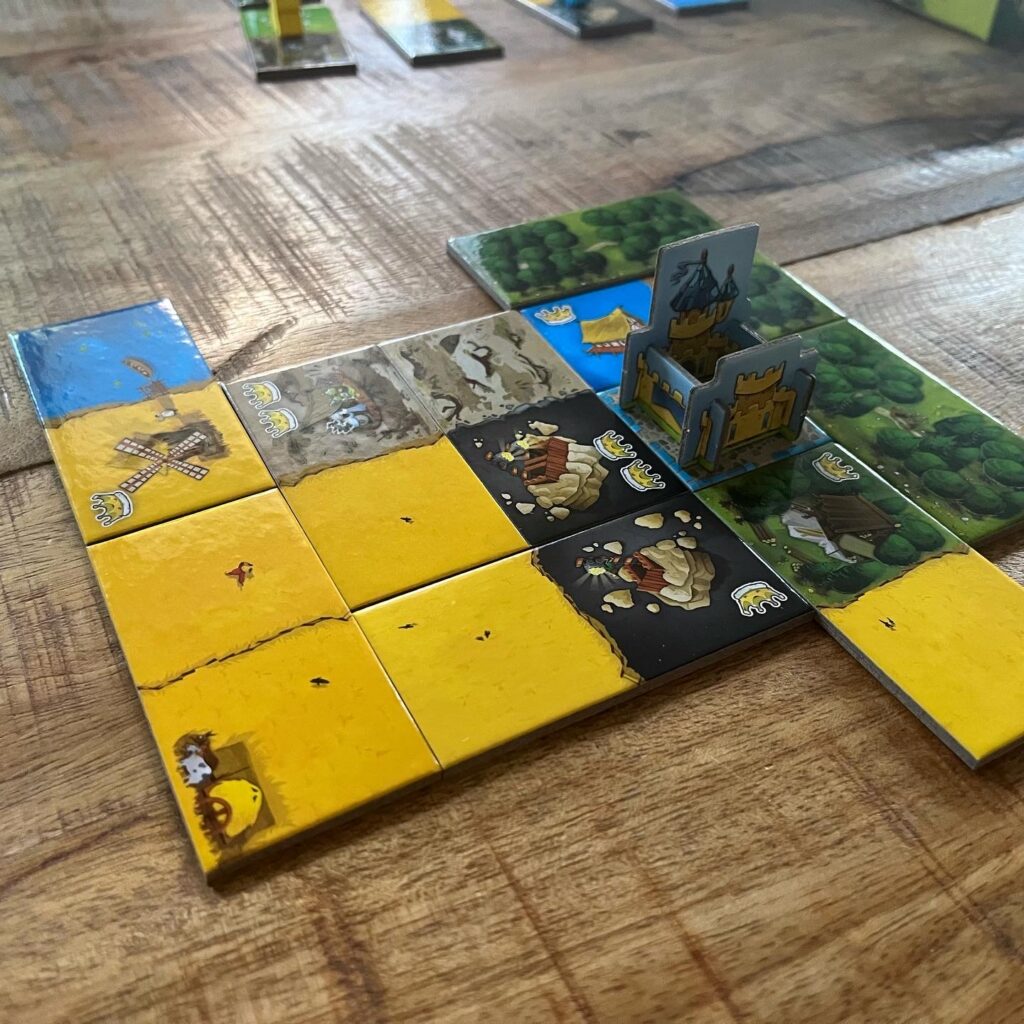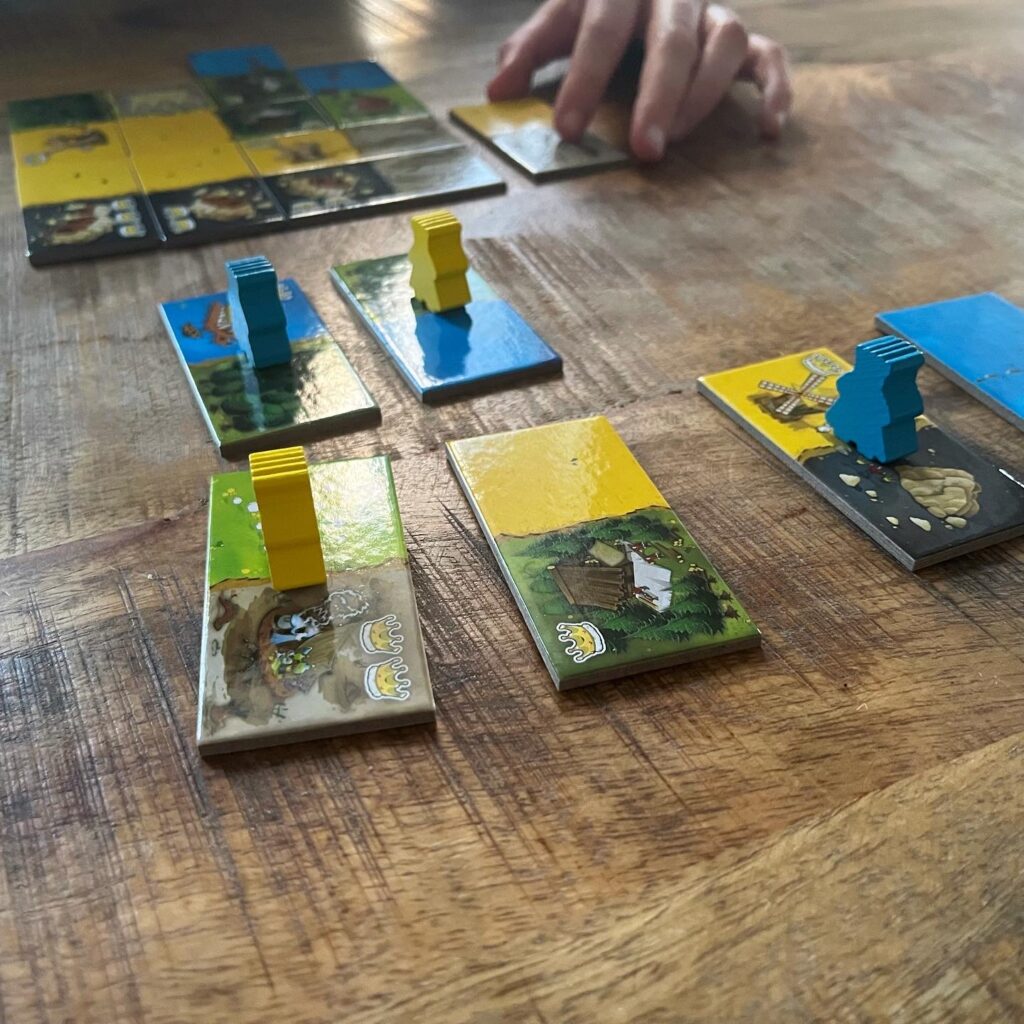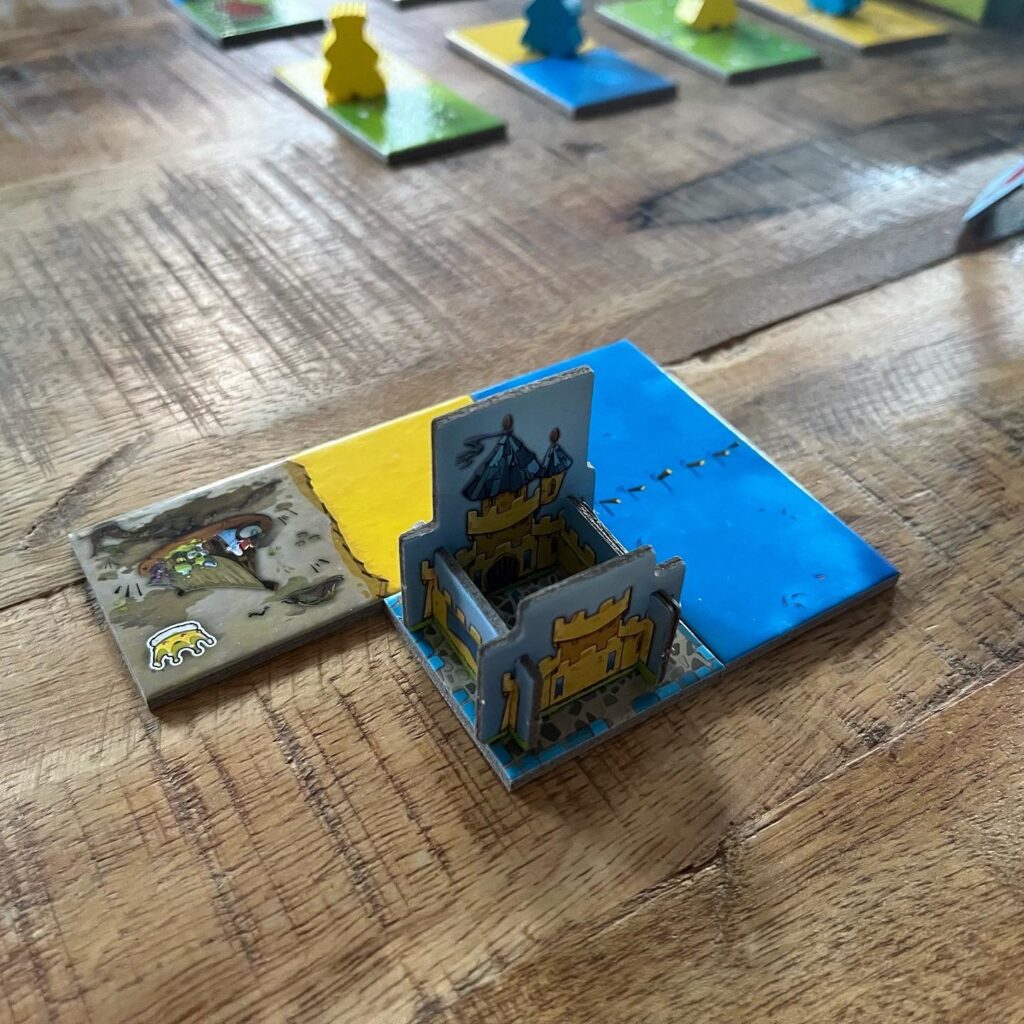I probably don’t have a good idea of the subject of planning, but I can imagine that if large square terrains fall from the sky and you get to place them in your kingdom of your choice, this could possibly be a planner’s dream. In Kingdomino, players get to select and place domino tiles with terrains. Will you become an award-winning planner or a notorious disasterologist?
In the game Kingdomino, you try to become the ruler of the largest empire by finding new lands for your kingdom. Those countries – as the name might suggest – are represented by sturdy cardboard domino tiles in different colours. Each colour (and the matching images) correspond to a terrain. Each tile contains two surfaces. Several contiguous faces in the same colour form an area. Some tiles have crowns on them and these represent victory points. At the end of the game, check how many crowns you have in an area and multiply it by the number of squares in this area. Do this for each area to calculate your final score. The player with the most points wins.

To set up the game, players set up a certain amount of domino tiles depending on the number of players. Each player gets a starting tile, a castle and a queen (or in the case of two players, two queens per player) in their chosen colour. Players place their starting tile with castle ready and dominos can be placed to start the game.
At the start of the game, draw the appropriate amount of tiles and place them face-up on the table from low to high according to the value on the bottom of the tile. Randomly, players take their turn in the first round and decide which tile they want to take by placing a queen on it. New tiles (again in order of tile value) are placed next to the previously placed tiles. Players now take their chosen tiles in order of the queens placed and then choose an empty tile (in the new row) to place their queen on in order to claim this tile later as well. Tiles are turned open again in the same way and turns are performed just until all tiles have been distributed. This mechanism ensures that the turn order constantly changes.
After players claim a tile on their turn, they must place it in their kingdom. They do this in classic domino fashion: the tiles must match in terms of terrain. A player’s kingdom can be a maximum of 5 x 5 squares, so players have to puzzle carefully and may have empty squares in their kingdom. If they cannot place a tile, they are out of luck.
Kingdomino reintroduced – or at least I think it’s fair to say – dominoes to the board game world. Kingdomino came out in 2016 with quite a furore and received several awards, including the Spiel des Jahres (a German award for game of the year) and As D’Or Jeu De L’Anee (the French equivalent). And I get that. Kingdomino is a very light-hearted and friendly game, but not extremely complex. The alternating turn order was very innovative and the domino mechanism is familiar with a clear scoring system. A good recipe for a simple family game that even young players will understand well. For the very young there is also Dragonimo and for experienced Kingdomino players there is also Queendomino and Kingdomino: Origins. The latter, by the way, we reviewed once. All in all, the Kingdomino games offer light-hearted puzzle entertainment that everyone picks up easily.








